How to Write an AWESOME Email Newsletter
Written by Brian Dean
Today I’m going to show you how to write a newsletter that people open, read and share with their friends.
In fact, this is the same step-by-step approach that I used to create a passionate newsletter following of 65,795 total subscribers.
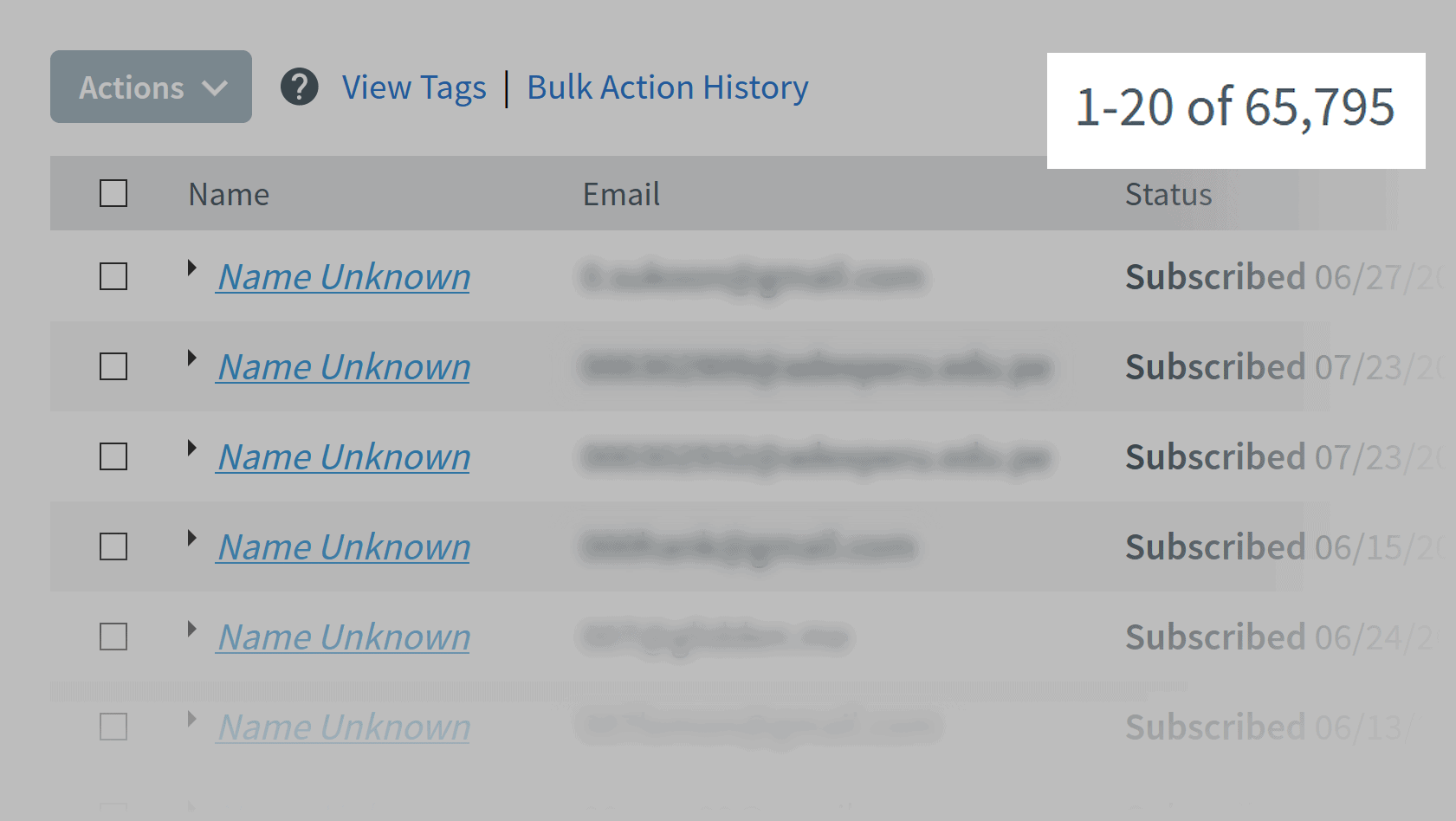
And an open rate well above 40%.
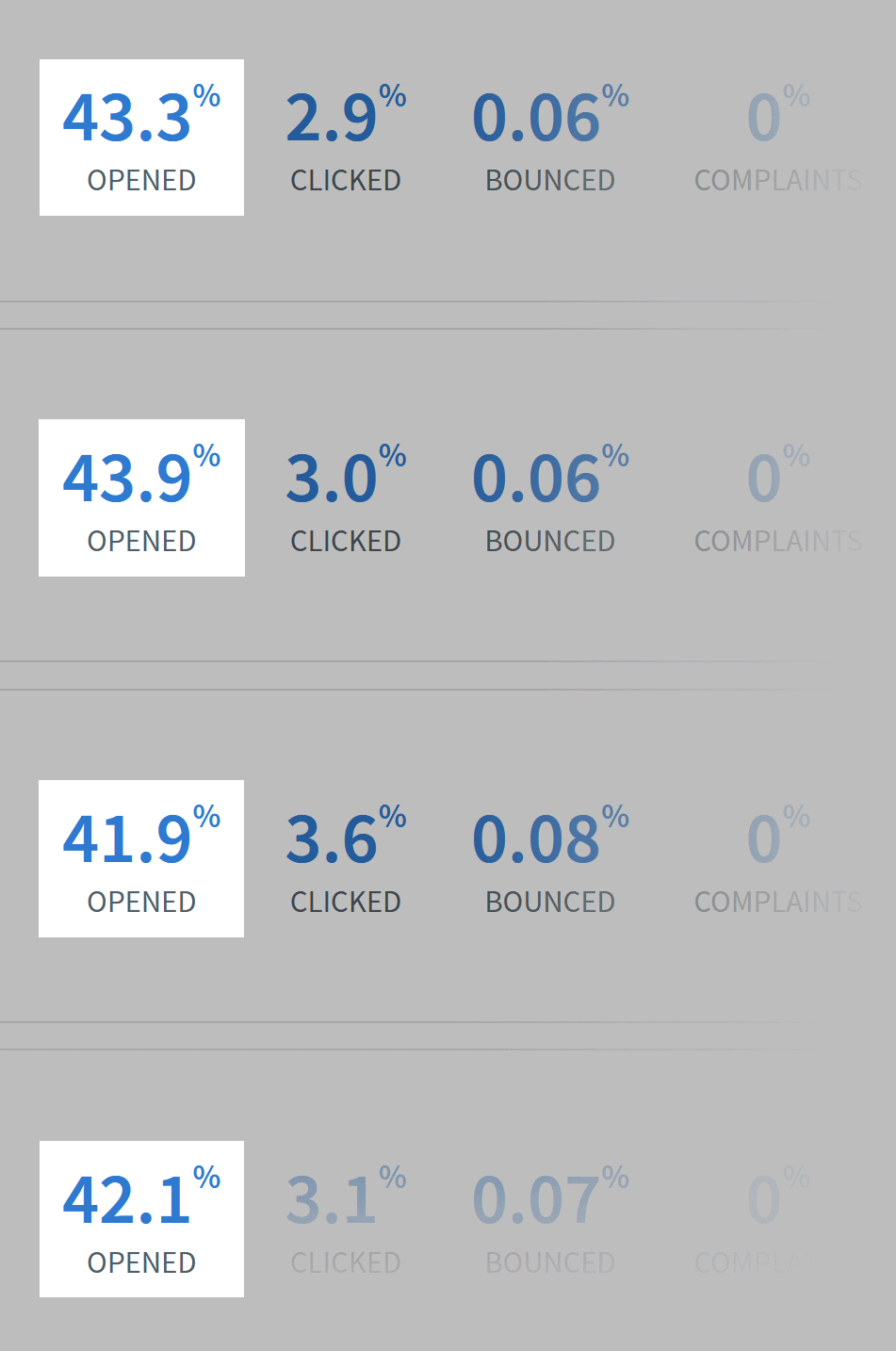
With that, let’s get right into the steps.
- Step #1: Identify Your Newsletter’s Target Audience
- Step #2: Choose Your Newsletter Format
- Step #3: Write Your Newsletter Content
- Step #4: Craft a Winning Subject Line
- Step #5: Include a Call to Action
- Step #6: Test and Iterate
- Bonus Step #1: Use a Clean, Simple Design
- Bonus Step #2: Stick to a Set Schedule
Step #1: Identify Your Newsletter’s Target Audience
Your first step is to figure out WHO your newsletter is for.
For example, when I created the Exploding Topics newsletter, our initial target audience was “content creators”.
And our newsletter focused on the needs of that specific group.

As you can see, we included lots of info about search volume and keyword difficulty.
Both of which are important for bloggers and YouTubers.
(Our target audience at the time).
But we eventually realized that our ideal audience actually wasn’t made up of content creators.
Instead, we eventually learned that our REAL target audience was: “investors and serial entrepreneurs”.
Which completely changed the way we approached the newsletter.
Specifically, we cut out anything related to SEO, keyword difficulty and content.
Instead, we focused more on things that investors care about, like market size and companies that have received VC funding.
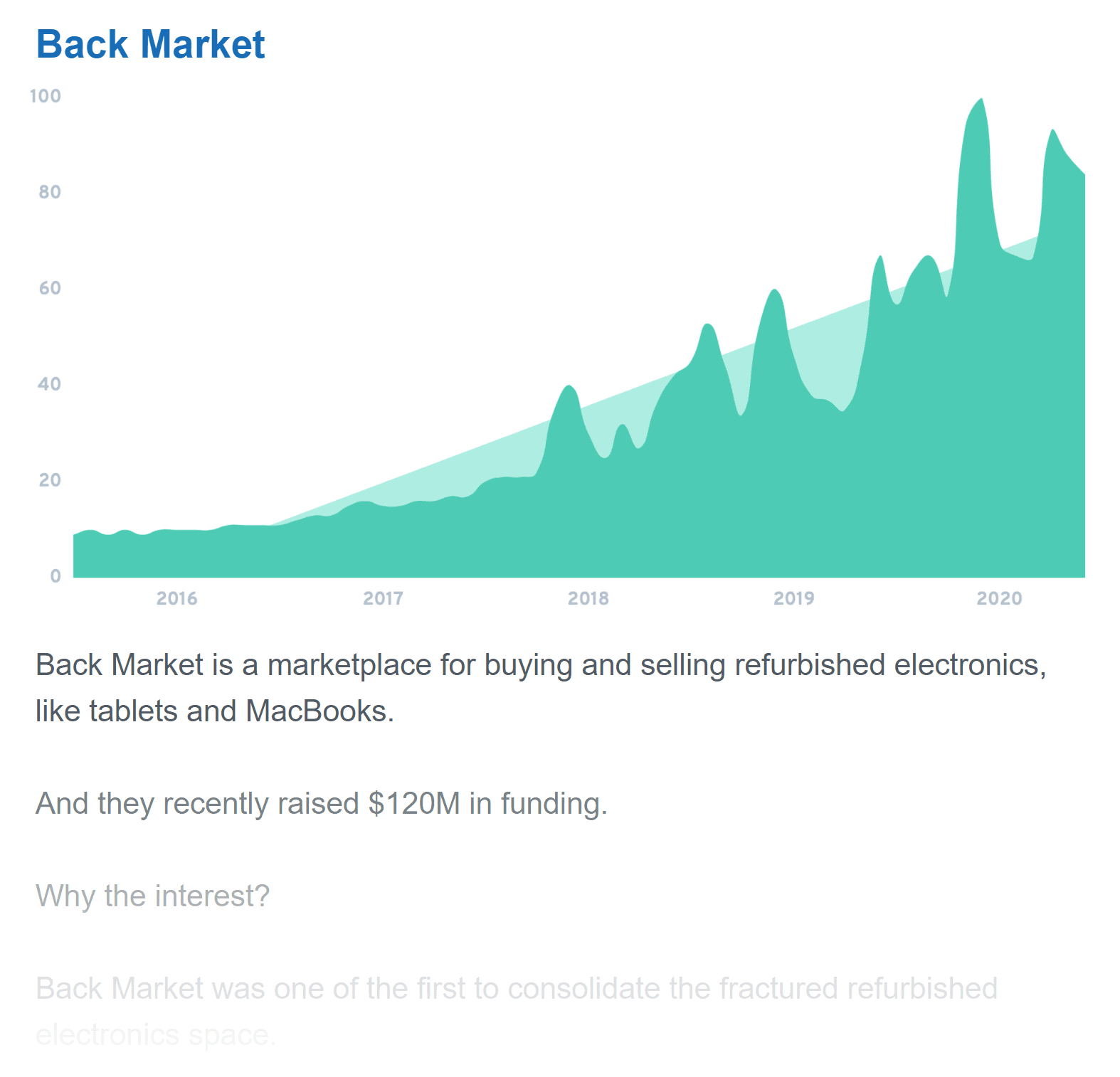
So yeah, you definitely want to pick one small niche at first. You can always expand it out later.
Or, like the case with my newsletter, change your audience altogether.
Either way, having a target audience ready to go is HUGE.
Because it ultimately determines how you execute the remaining steps in this process.
Speaking of…
Step #2: Choose Your Newsletter Format
Now that you have a target audience picked out, it’s time to choose a format for your newsletter for that specific group.
And when I say “format”, I’m NOT talking about fancy HTML templates.
(I’ll cover that stuff later on in this guide).
When I say “format”, I mean the structure of your newsletter content.
And this will be completely different depending on your audience.
For example, my target audience for the Backlinko newsletter is: “Professional marketers”.
In other words: people that do marketing for a living.
That means that my content needs to be pretty advanced. And no-nonsense.
Which it is:
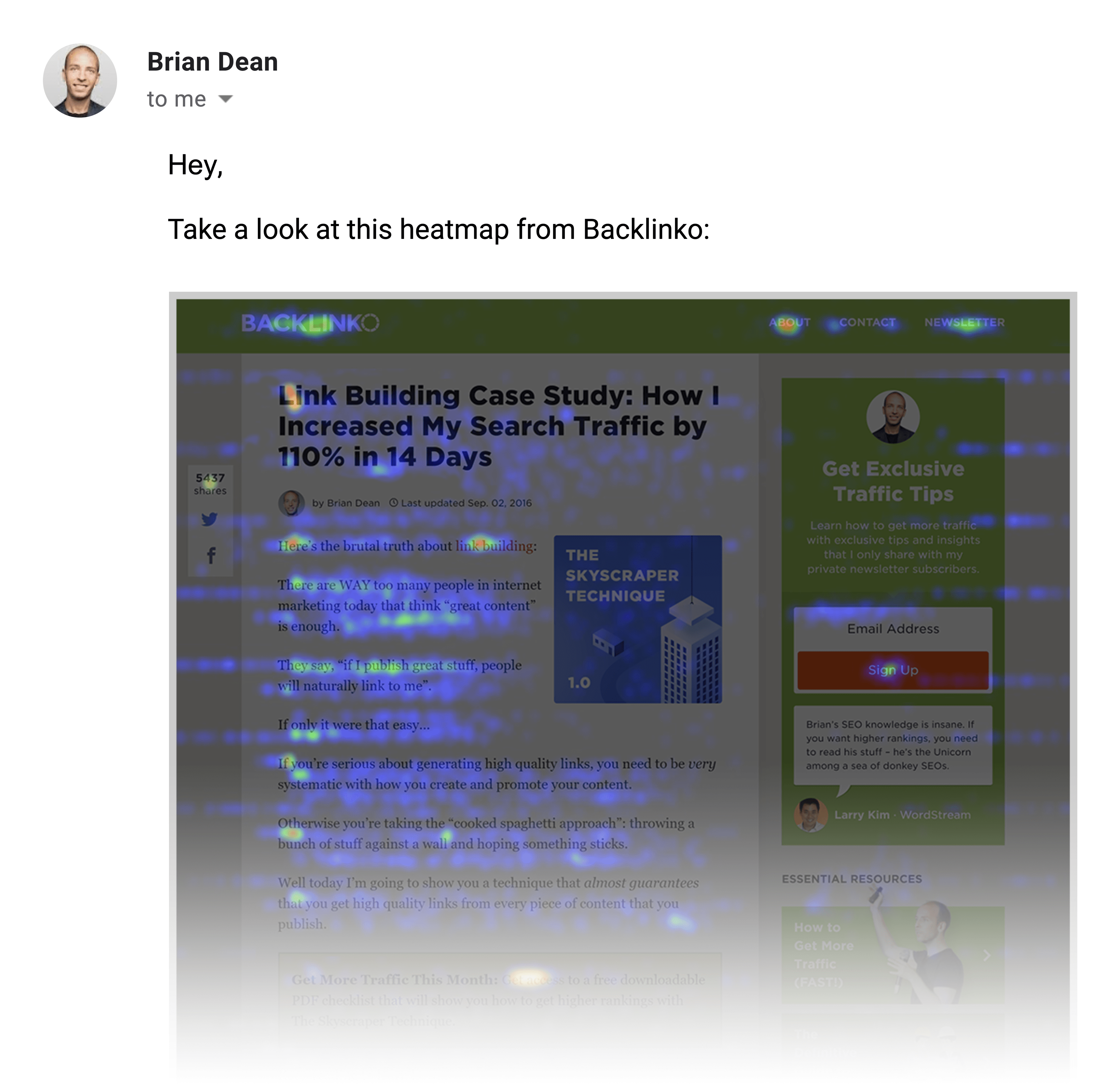
I also can’t use a lot of hyped-up marketing. My audience would see right through that.
Instead, I try to write my newsletters in a very personal style.
Kind of like I’m writing to a friend.

In fact, here’s the exact email newsletter template that I use:
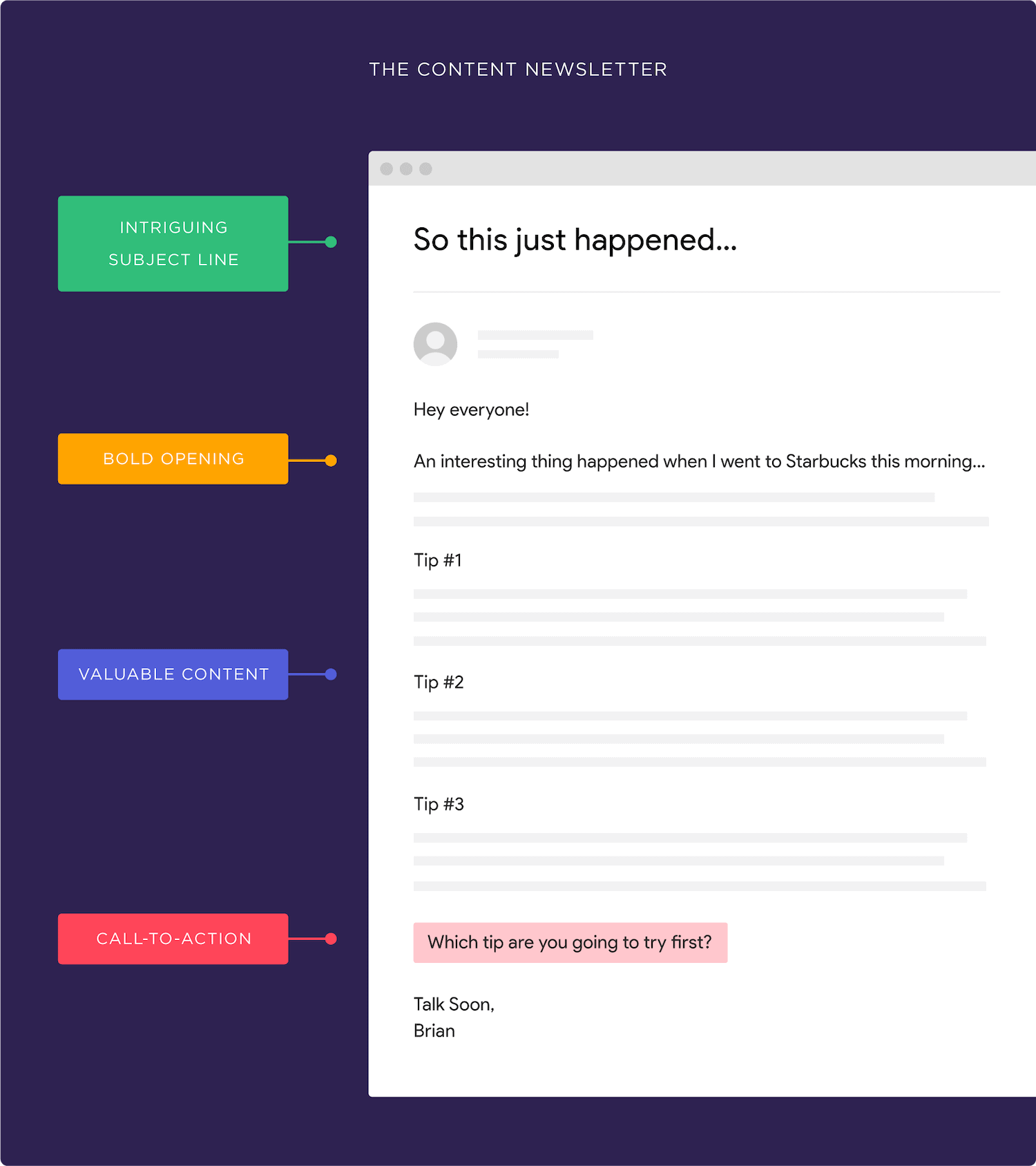
Now:
The Exploding Topics newsletter has a completely different audience than Backlinko.
Which means the format that I use is also super different.
Specifically, our newsletter looks a little bit more “corporate”.

And the content doesn’t sound like it’s coming from a friend. It’s more of a report.

Which is what our audience of pro investors want to read.
And now it’s time for…
Step #3: Write Your Newsletter Content
Now it’s time to actually write your newsletter.
Like I said earlier, the exact writing style and format depends a lot on your target audience.
That said, there are a handful of key principles for writing engaging newsletter content.
And these principles tend to be pretty universal no matter what kind of email marketing that you’re doing.
So without further ado, let’s get into them.
First, start with a bang.
Your newsletter’s intro is HUGE for two reasons:
First, the first line or so of your email can show up as a preview in Gmail.

Second, your intro is what will make someone decide to keep reading. Or move onto the next message in their inbox.
Fortunately, writing newsletter intros isn’t super hard.
In fact, all you need to do is preview what your newsletter is all about.
Here’s an example:

See how that works?
I’m letting you know EXACTLY what’s coming up. Which pushes you to scroll down.
We actually do the same thing for the Exploding Topics Tuesday email. Every newsletter starts off with this line.

That way, people know exactly what they’re getting.
Second, write for skimmers and scrollers.
The fact is: your email newsletter is one of dozens that your subscriber receives each day.
Which means they’re NOT going to read it word for word.
Instead, they’re going to skim your newsletter to get the gist.
Which is why you want to write content that’s easy to skim.
Specifically, use paragraphs that are 1-2 sentences.

Bold key info.

And include little summaries and takeaway lessons.

Third, write for mobile readers.
You probably write your newsletter on a desktop.
Thing is:
The vast majority of your subscribers will read your email on their phone.
(In fact, 62% of emails are now opened on mobile devices)
So it’s important to proofread your newsletters on your phone.
That way, you’re reading your content the same way your email subscribers will.
You might not have to make any changes. But sometimes you’ll find that the copy that worked on your desktop reads funny on mobile.
Finally, break up your newsletter into sections.
This is key.
The most popular newsletters on the planet (from Morning Brew to Tim Ferriss’s 5-Bullet Friday) all break up their content into discrete sections, like this:

And you want to do the same with your newsletter.
So instead of one long section, break things up into as many sections as you possibly can.
For example, the Exploding Topics newsletter puts each topic into its own section.
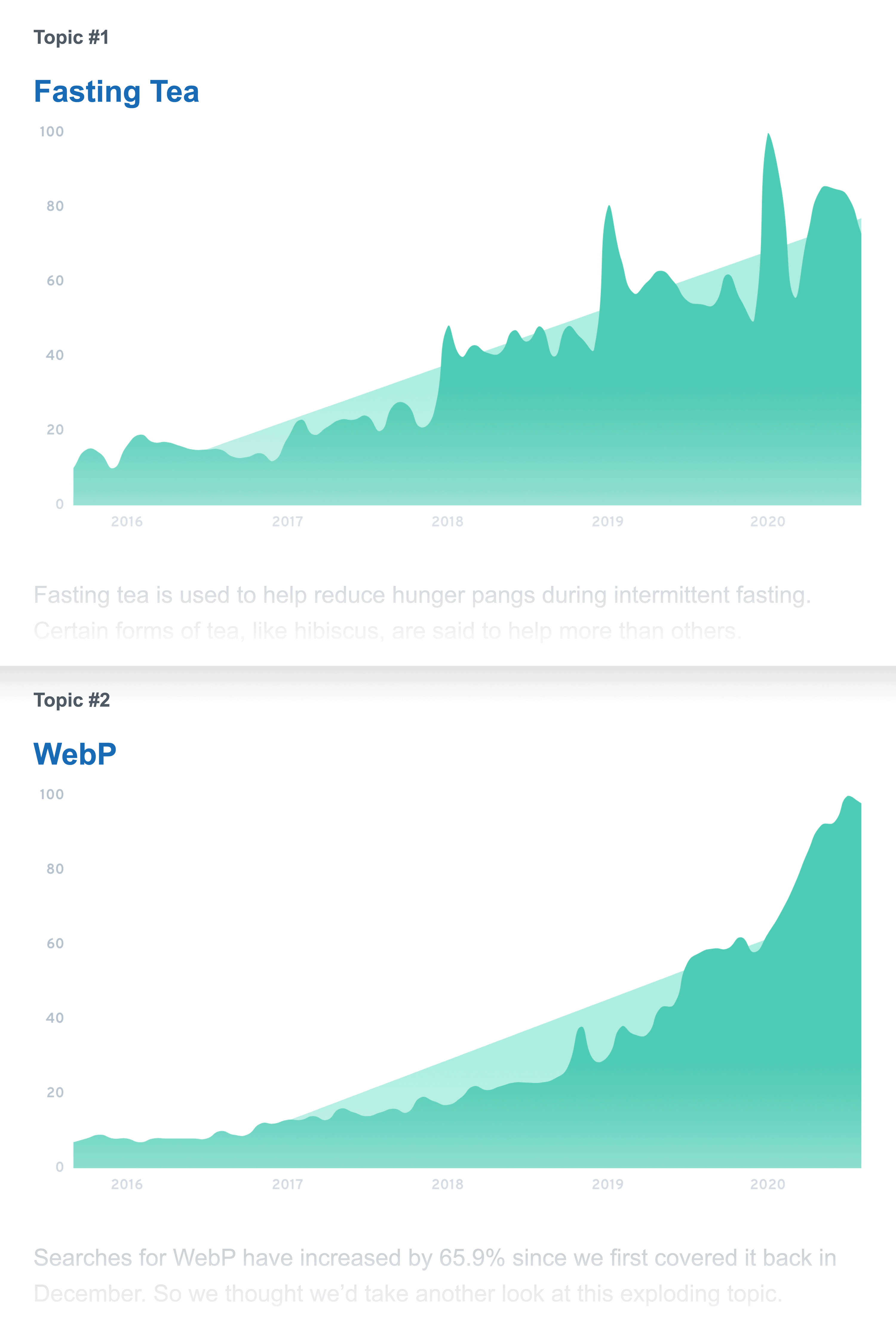
And even my Backlinko newsletters have lots of different sections.

Step #4: Craft a Winning Subject Line
Eye-catching subject lines are one of the best ways to improve your open rates.
Question is:
HOW?
Condense the content of your newsletter into 3-4 words.
Seriously, that’s it.
My early Backlinko email subject lines were way too long. And complicated.
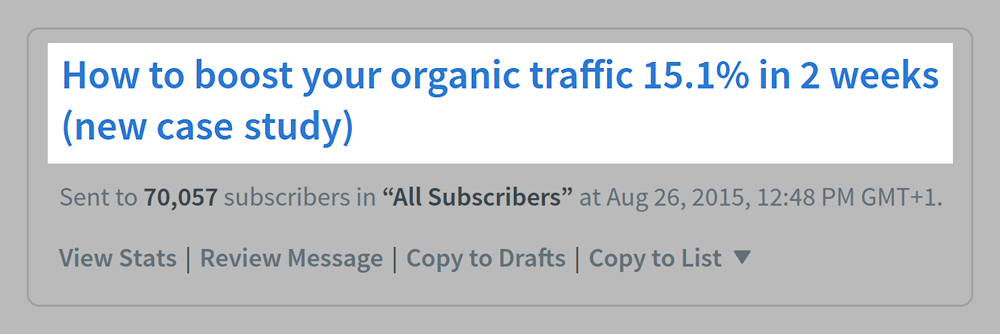
I thought that I needed to write wacky subject lines. Otherwise people wouldn’t open my emails.
But I was wrong.
After years of testing, I’ve found that short, simple subject lines work best.
Here’s an example.

That email was about writing quality content. So I condensed that into two words: Quality Content.
And that email got a 38.4% open rate.
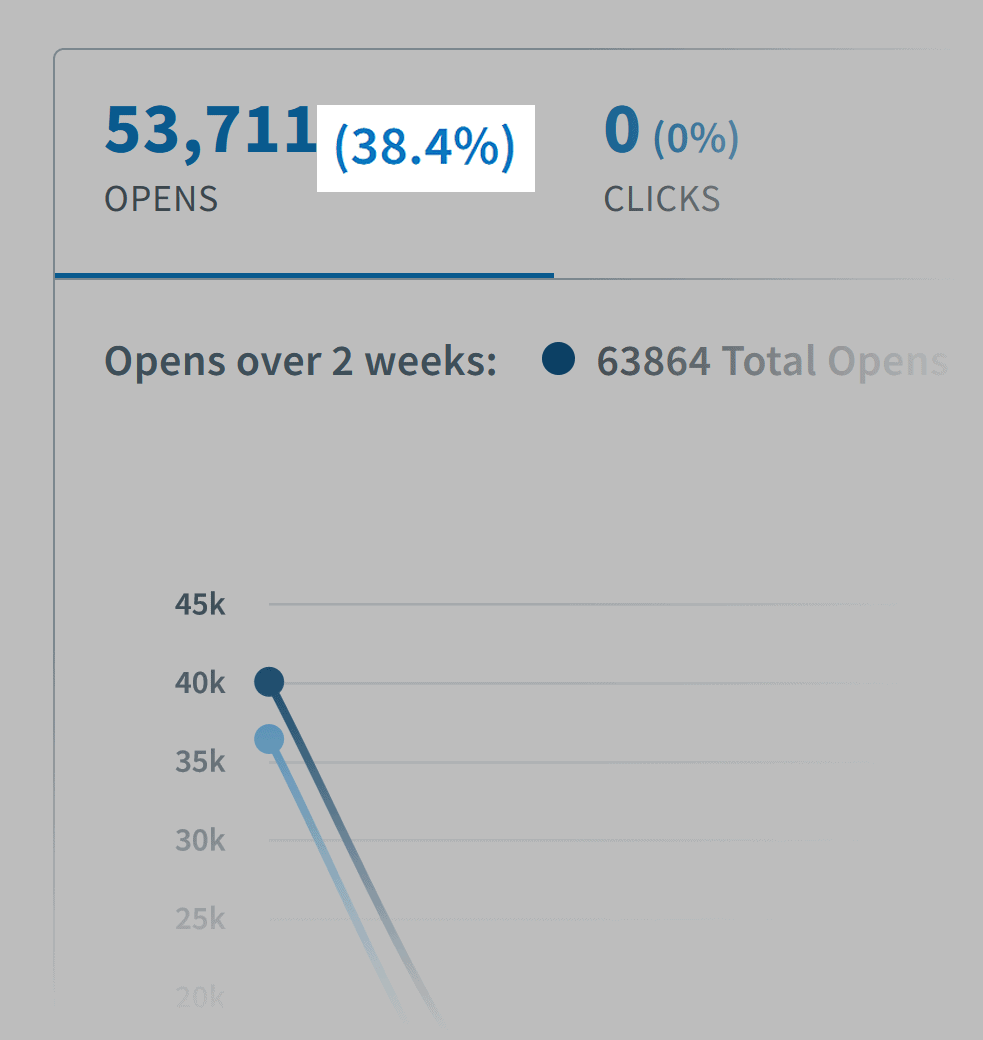
Bottom line? There’s no need to overthink your subject line. Just use short subject lines that accurately describe what your newsletter is all about.
And you’re good to go.
Step #5: Include a Call to Action
Every newsletter needs a call to action.
That said:
The CTA that you use depends on your newsletter.
For example, many of my Backlinko newsletters include a CTA to read one of my latest blog posts.
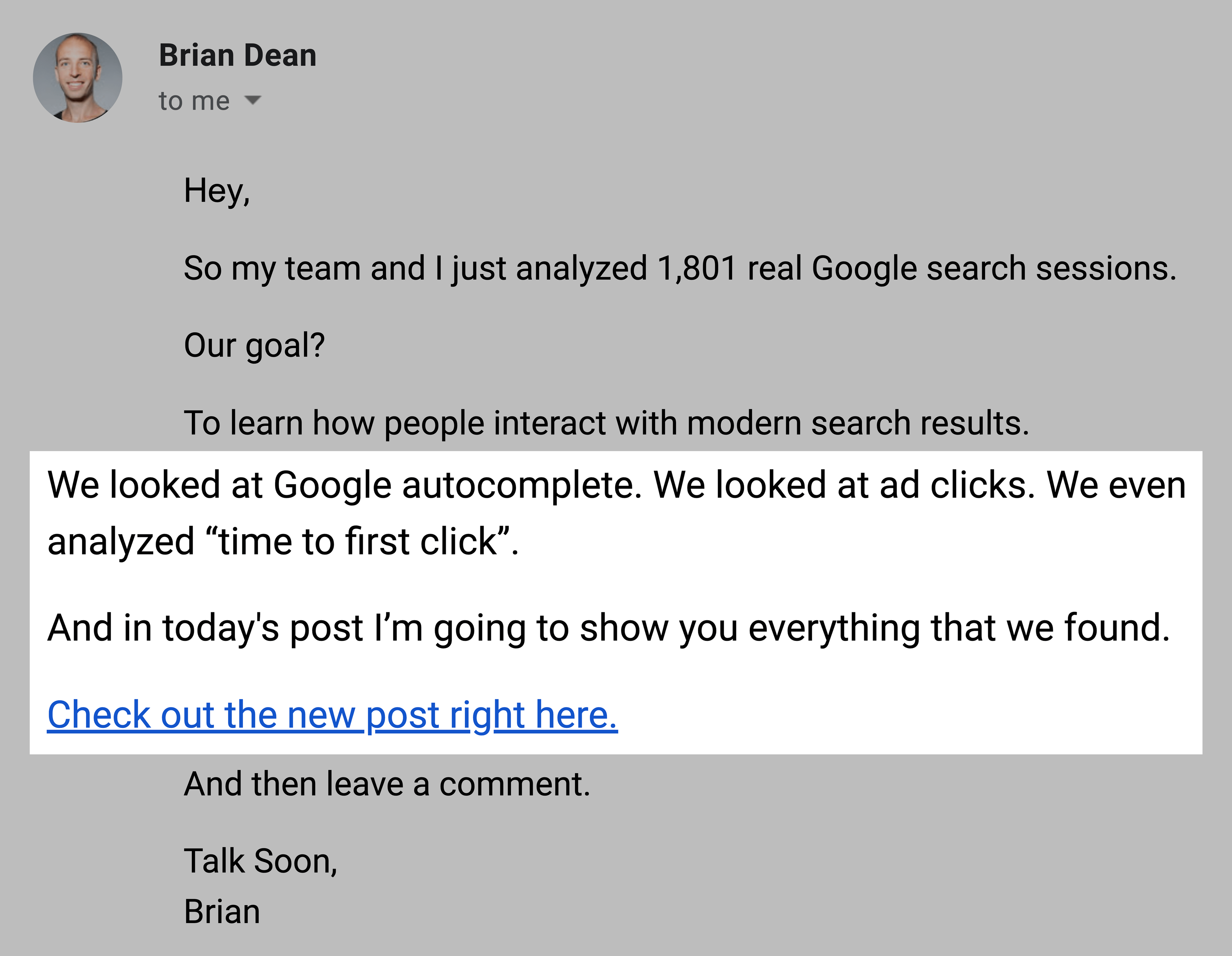
But when I’m launching a new product, my CTAs are to learn more about the product.

(And to buy it)
So yeah, you can mix up your CTAs depending on the specific goal of each newsletter
Sometimes you just want your subscribers to click on a link. Other times you might want them to follow you on social media.
Either way: make sure to include a CTA at the end of every newsletter.
If you’re struggling to think of a CTA, just ask subscribers to forward your newsletter to their friends and colleagues.
Email forwards are a surprisingly powerful way to get more email subscribers.
(It’s basically word of mouth via email)
Here’s a real-life example:
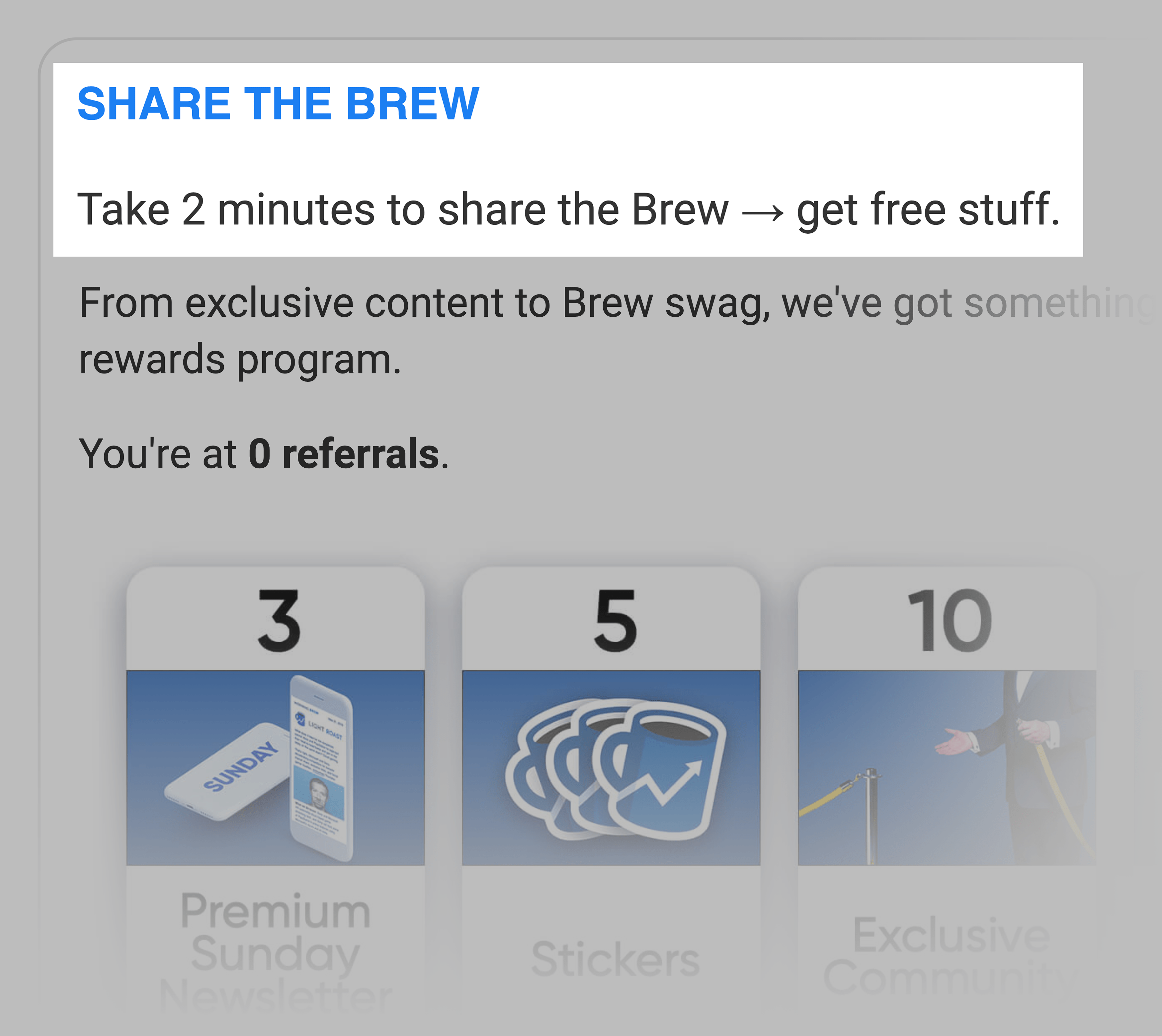
Step #6: Test and Iterate
Now that you have a bunch of newsletters under your belt, it’s time to test, iterate and improve.
Here’s how:
First, ask your subscribers to send feedback and suggestions.
Subscriber feedback has led to A LOT of helpful suggestions that significantly improved my newsletters.
(I also get crazy emails from crackpots. But that’s another story 😀 )
Second, send out a survey to your existing subscribers.
Feedback from random people is nice and all.
But nothing beats a good ol’ fashioned survey.
In fact, we sent a survey to our Exploding Topics newsletter subscribers a few weeks ago.

And it completely flipped how we viewed the people on our email list.
Specifically, we learned that a good chunk of our subs were VCs and angel investors. NOT content creators like we originally thought.
And that would have been hard (or impossible) to learn without a survey.
Third, look at the data.
Last up, look at how your open rate and click through rate is trending over time.
Now: it’s normal for your open rate to dip as you add subscribers to your list.
That’s because your initial batch of subscribers are going to be SUPER passionate fans.
Fans that love what you’re doing. Fans that actually look forward to every newsletter that you send. And fans that will happily click on every single link in your email.
But as your list grows, your percentage of superfans drops. And your open rate drops with it.
For example, our early Exploding Topics newsletters had a 54% open rate.
Today, our open rate is still about 40%.
But it’s a far cry from the early days.
Again: that’s normal. And expected.
But if you see that your open rate is going from 50% to 35% to 19%, that’s a sign that something’s wrong.
Maybe your content isn’t resonating with your new, larger audience.
Maybe you’re not balancing pure-value emails with promotional messages.
Or maybe you just need to do some list hygiene (unsubscribing people that haven’t opened your emails in 6+ months).
Either way, it’s important to keep tabs on your open rate, CTR, and unsubscribes over time. And iterate and change things up as needed.
Bonus Step #1: Use a Clean, Simple Design
A clean, simple newsletter design is helpful for two main reasons.
Reason #1: Clean newsletters are easier to read.
Needless to say, you want people to READ your newsletter.
But it’s hard to read a newsletter with a fancy design.
Instead, you want to send newsletters that have a VERY simple design. Like this:

Or, don’t have any design at all, like this:
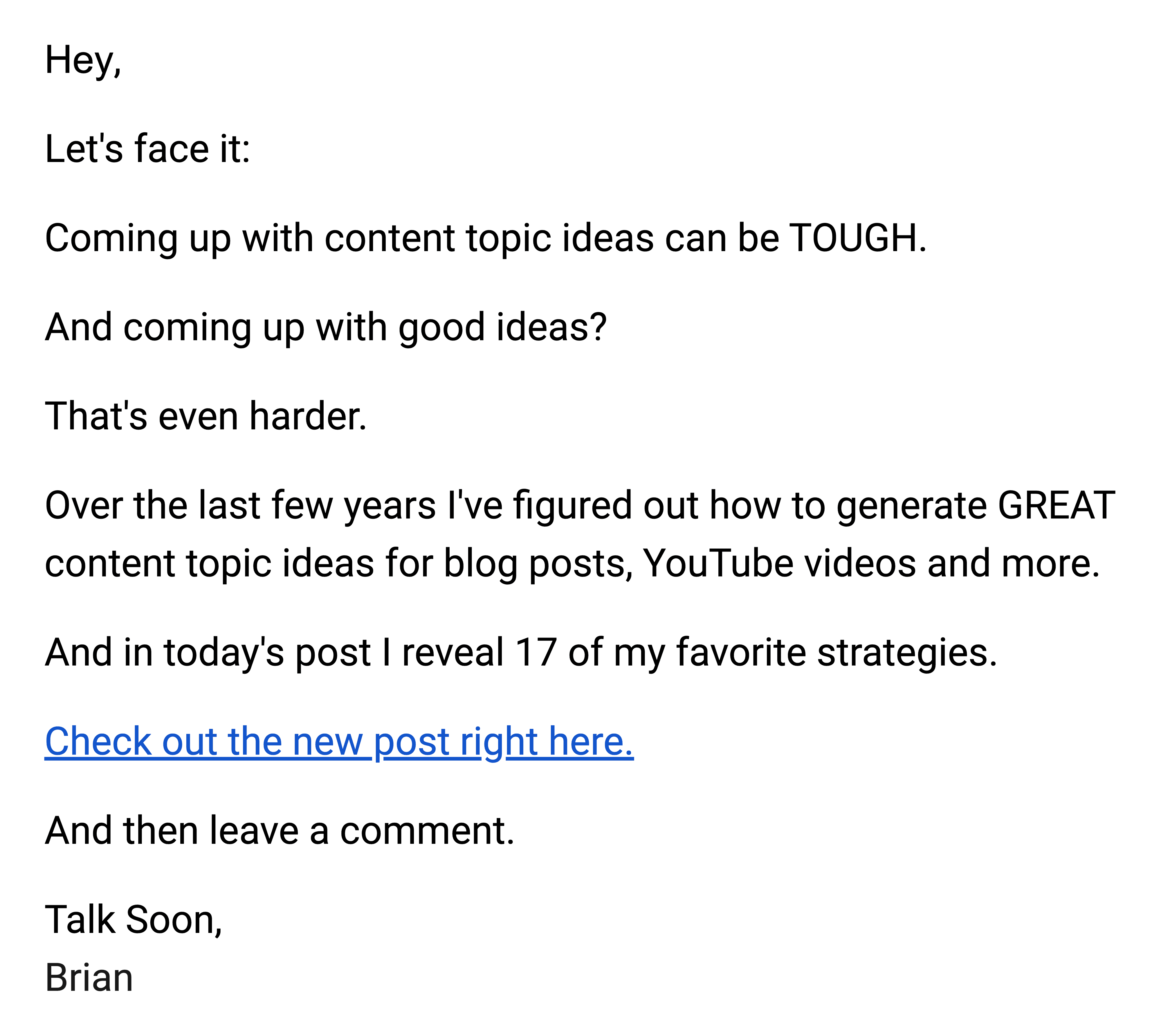
That way, the focus is on the content. Not fancy graphics.
Reason #2: Simpler designs have better deliverability.
For example, our early Exploding Topics newsletter was relatively clean. But still had a lot of HTML and other fancy design elements.
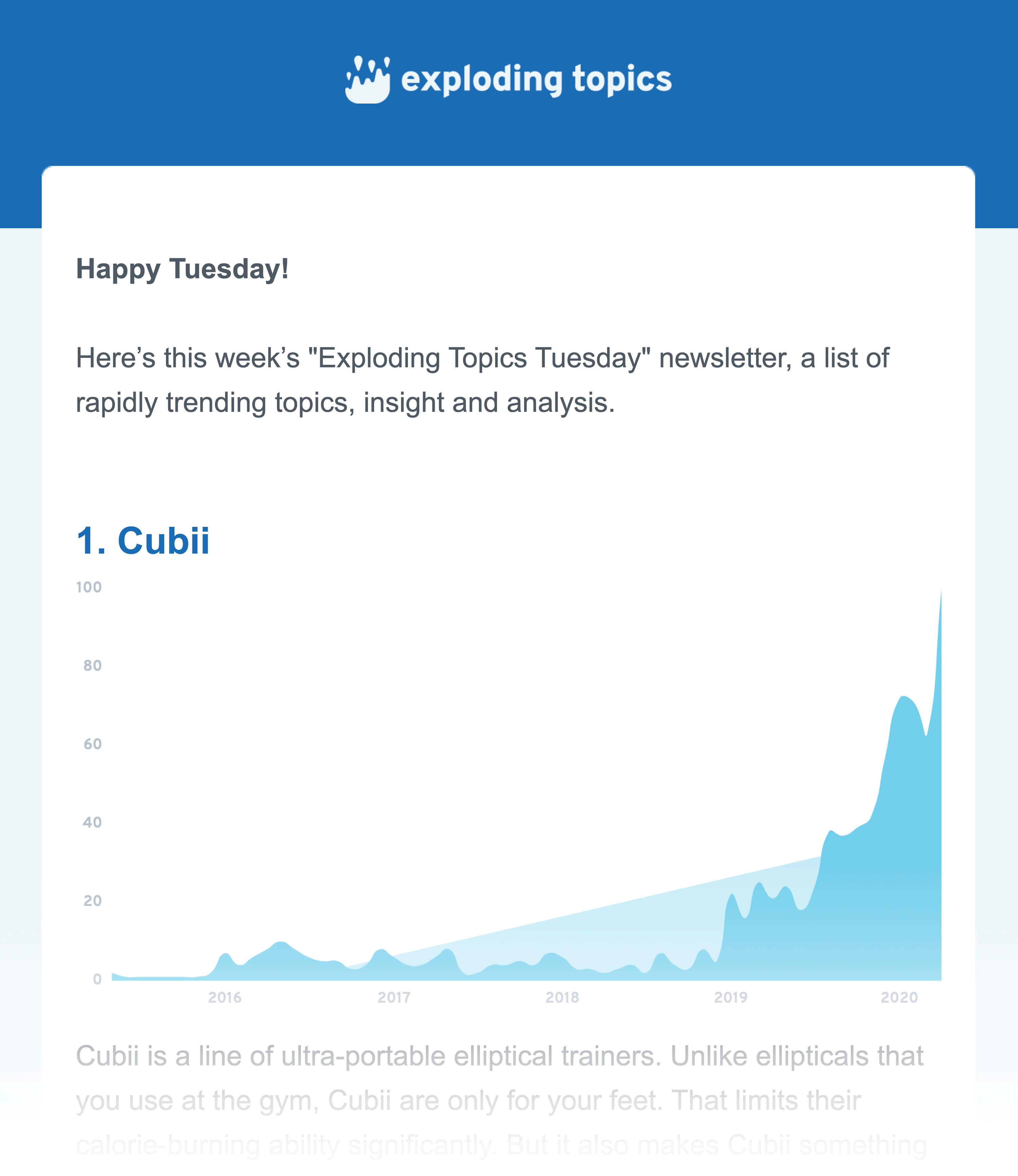
Which partly explained why our open rates fell when we launched this design.
A few months later we rolled out a MUCH simpler version of the same design.
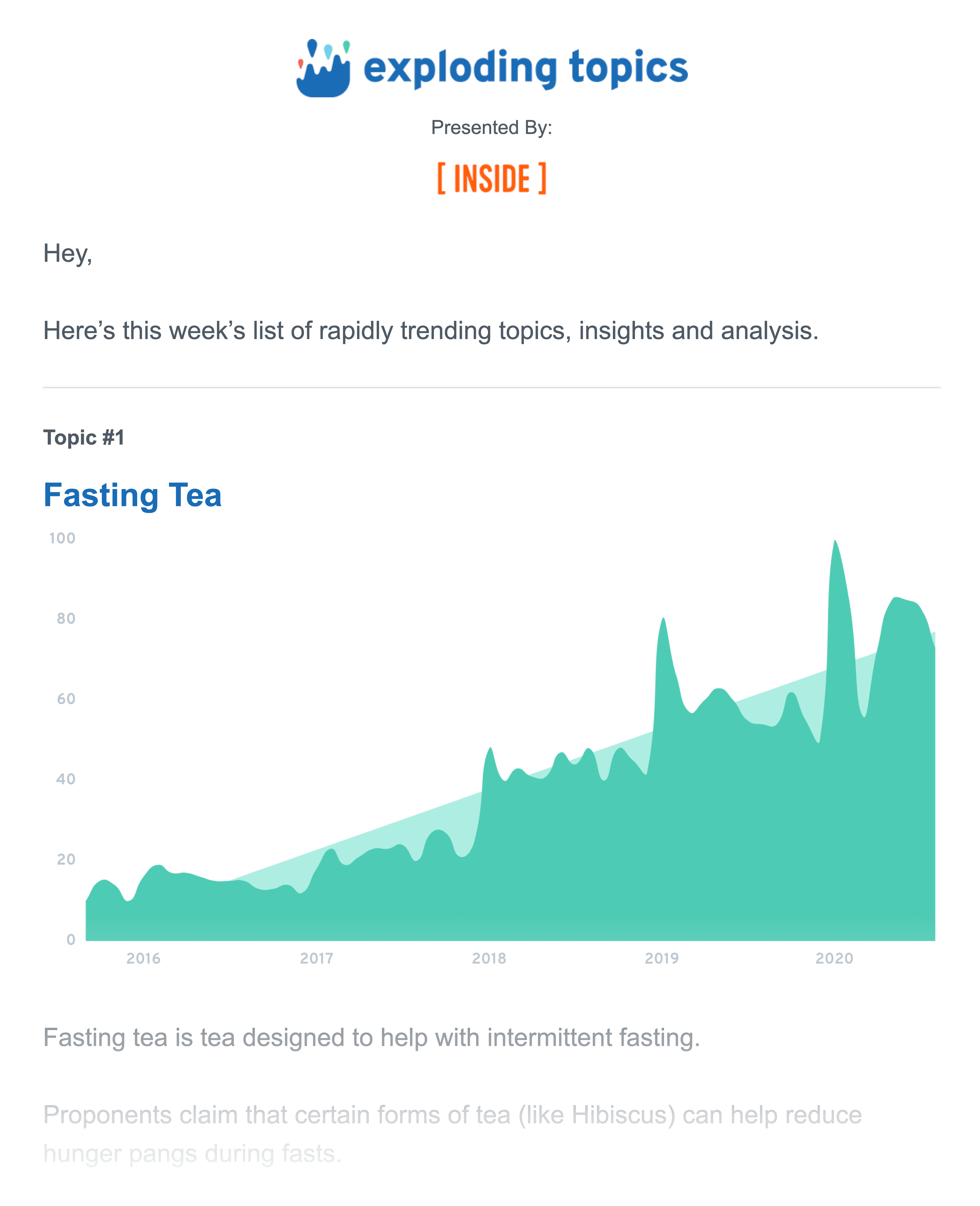
And our open rates improved pretty much on Day 1.
Bonus Step #2: Stick to a Set Schedule
When you send your newsletters on a schedule, your subscribers will EXPECT them.
Which makes them more likely to open.
For example, our Exploding Topics weekly newsletters go out on Tuesday mornings. No breaks. No “sorry, I got busy and had to send this on Wednesday this week”. No excuses.
Every. Single. Tuesday.
And this consistent schedule is one of the reasons that our open rates remain high even as we add lots of new subscribers to the list.
In fact, many of our subscribers say that they LOOK for our emails to hit their inbox on Tuesday morning.
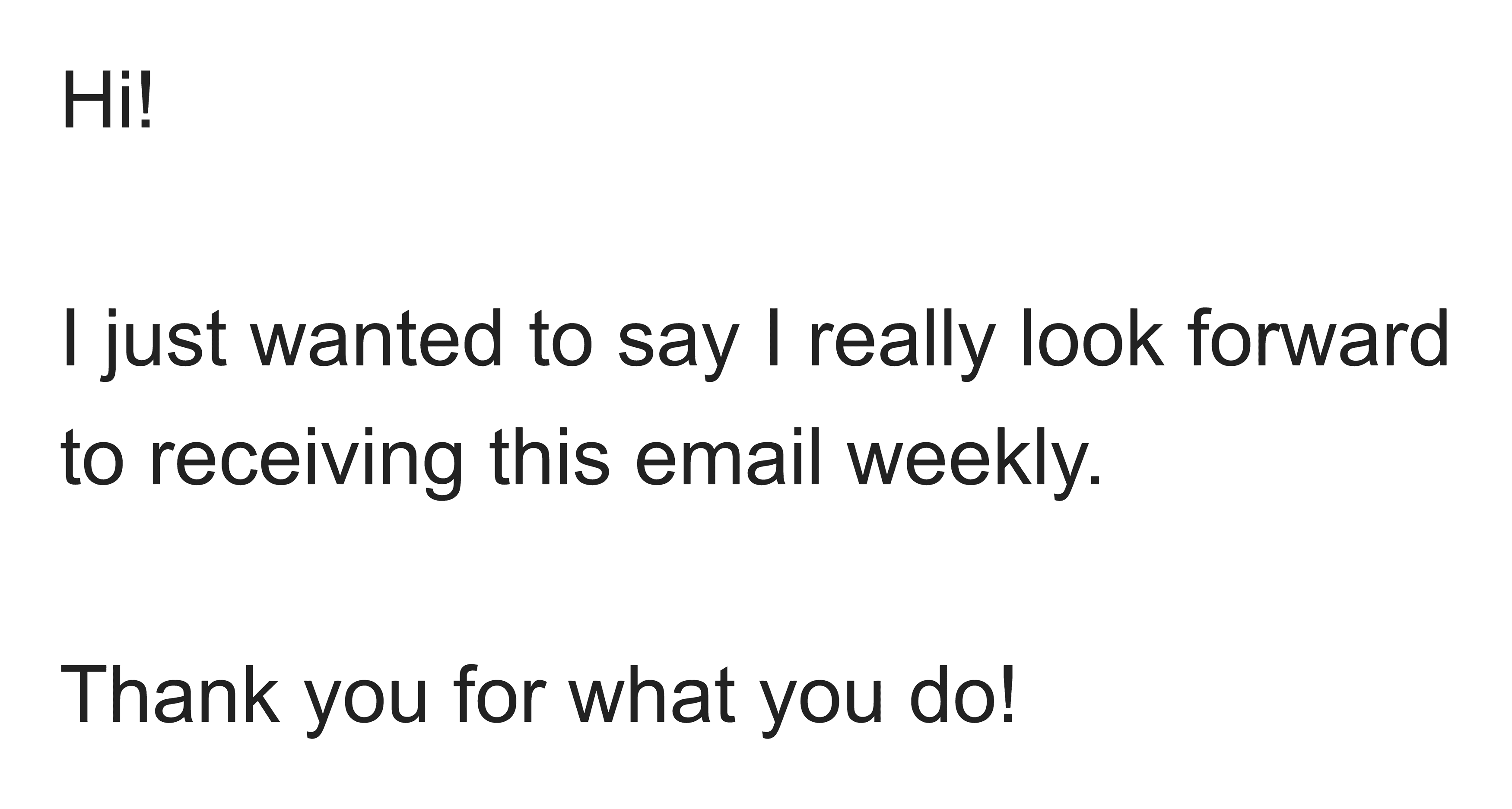
That’s the power of a set schedule.
Wrapping Up
There you have it: my guide to writing an email newsletter that people want to read.
Including lots of lessons learned from running my own newsletter for 8 years.
Do you have a question about something from this post? Or a helpful tip that I didn’t include here?
Then go ahead and leave a comment below.